The Diaconate of Pope Benedict XVI
A look at a man devoted to serving charity, serving at the altar, serving with the Word
Deacon Greg Kandra 1
I’ve lived in New York City for most of my adult life, but I’ve only been to the original Yankee Stadium once. It happened in April 2008, when my wife and I took the subway to the Bronx, joining about 60,000 other people, all there to crowd into the stadium and buy souvenir rosaries and holy medals and to see, in the flesh, my boss.
My boss, of course, was Pope Benedict XVI.
He was celebrating Mass in the stadium that afternoon — his final liturgy as part of his historic trip to the United States.
I had been ordained a deacon for less than a year, so, for me, this was monumental. I left nothing to chance. I wore my deacon baseball cap, my deacon Windbreaker and affixed a deacon pin to my deacon polo shirt. In a legendary place often referred to as the “Cathedral of Baseball,” I was there not to play but to pray, and I wanted the world to know which team I was on. (I even bought a souvenir baseball shirt that said, on the back, “B16.”)
It was a heady experience. To see the man himself roll out in the popemobile, greeted by cheers and applause as he offered a wave and a shy smile to anyone he saw — well, it was a moment for goose bumps. He was my pope. I was his deacon. It was thrilling just to be there.
I thought about that Mass often in the days following Benedict’s death, as tributes poured in and pundits began to unpack his legacy. Everyone had an opinion; he will surely be analyzed, studied and evaluated for decades, if not centuries. But as I read about his papacy, his life and his philosophy, I discovered a man who was not just the leader of a billion people and a towering theologian and thinker.
Reflecting on his monumental ministry, I came to realize that the heart of Joseph Ratzinger, Pope Benedict, was fundamentally the heart of a deacon.
To look at his vocation within the Church is to see the ministry of — in a familiar description of the papacy — a “servant of the servants of God.” Here was a man devoted to serving charity, serving at the altar, serving with the Word — and in ways that were uniquely his own.
Among other things, he clearly viewed the diaconate with affection.
In 2005, shortly before that memorable visit to Yankee Stadium, he met with clergy from the Diocese of Rome. Those present were given a chance to ask questions. The very first one came from a permanent deacon who asked for some guidance on how the deacons could carry out, as he put it, “an initiative that we can share in the way and the manner that you wish to specify.”
In other words: What do you want us to do?
Benedict replied by mentioning how much he appreciated the Second Vatican Council reviving, as he put it, “this important ministry in the universal Church.”
Then he continued: “Every priest, of course, also continues to be a deacon and must always be aware of this dimension, for the Lord himself became our minister, our deacon. Recall the act of the washing of the feet, where it is explicitly shown that the Teacher, the Lord, acts as a deacon and wants those who follow him to be deacons and carry out this ministry for humanity, to the point that they even help us to wash the dirty feet of the people entrusted to our care. This dimension seems to me to be of paramount importance.
“On this occasion a small experience noted by Paul VI springs to mind — although it may not be quite relevant to our subject. Every day of the council the Gospel was enthroned. The pontiff once told the masters of ceremonies that he himself would like to be the one who enthroned the Gospel. They said, ‘No, this is a task for deacons and not for the pope, the Supreme Pontiff, or the bishops.’ He noted in his diary: ‘But I am also a deacon, I am still a deacon, and I too would like to exercise my diaconal ministry by enthroning the Word of God.’ Thus, this concerns us all. Priests remain deacons, and deacons clarify this diaconal dimension of our ministry in the Church and in the world. The liturgical enthronement of the Word of God every day during the council was always an act of great importance: it told us who was the true Lord of that assembly, it told us that the Word of God is on the throne and that we exercise the ministry to listen to and interpret this Word in order to offer it to others.”
He went on, a couple of sentences later to say: “I think that one characteristic of the diaconal ministry is precisely the multiplicity of its applications. A few years ago, in the International Theological Commission, we studied the diaconate at length in the Church’s history and present. We discovered precisely this: there is no single profile. What must be done varies according to a person’s formation and situation.” I think that one characteristic of the diaconal ministry is precisely the multiplicity of its applications.
Rereading that all these years later, I can’t help but think: He understood. He got it.
And he lived what he preached. To look at Benedict’s life and work is to see with fresh eyes how he interpreted for himself and made his own the three ministries of the deacon — in the Word, in charity and at the altar.
We don’t usually think of “deacon” when we think of Pope Benedict XVI But maybe we should.
Ministry of the Word
I don’t think anyone would dispute this statement: When it came to writing and speaking, Benedict was brilliant. Behind his essays, encyclicals, letters and books, there burned a fierce and joyful intelligence. He lived to think, and to share what he thought, and to make clear his love for God. Pope Francis has hailed him as a “great master” of catechesis, whose heart was devoted to helping others encounter the Lord.
When he was a college professor in Germany, Joseph Ratzinger’s classes were packed. It’s said that nearby villagers would come to his lecture hal, just to sit in and listen. Read any of his homilies today and you can get a master class in the art of preaching — and not just from Scripture.
During his trip to New York City, a couple days before celebrating that Mass at Yankee Stadium, he stopped by St. Patrick’s Cathedral and transformed that historic landmark into a “sermon in stone.” He used the building’s architecture as his text, beginning with the stained-glass windows:
“From the outside,” he said, “those windows are dark, heavy, even dreary. But once one enters the church, they suddenly come alive; reflecting the light passing through them, they reveal all their splendor. Many writers — here in America we can think of Nathaniel Hawthorne — have used the image of stained glass to illustrate the mystery of the Church herself. It is only from the inside, from the experience of faith and ecclesial life, that we see the Church as she truly is: flooded with grace, resplendent in beauty, adorned by the manifold gifts of the Spirit. It follows that we, who live the life of grace within the church’s communion, are called to draw all people into this mystery of light.”
When it comes to spreading the Word, Benedict was more than a preacher. He was also a pioneer. As pope, he made history by posting the first papal tweet. He was excited by the promise and possibility of new media, and he saw it as a way to further proclaim God’s Word in the world.
He made that Word central to his public ministry, serving the Church and his flock in ways we are only beginning to grasp. And he was without peer. What he wrote, said, thought and taught will have an impact on future generations. His ministry of the Word is a singular part of his towering legacy.
Ministry of Charity
Two of Benedict’s encyclicals had “charity,” or love, in their title: Caritas in Veritate (2009), translated as “Charity in Truth,” and Deus Caritas Est (2005), or “God Is Love.” The notion of charity was clearly close to Benedict’s heart and at the forefront of his thinking. Cardinal Oscar Rodriguez Maradiaga noted as much in a 2013 speech to Canadian bishops.
“Deus Caritas Est presented an official doctrine on charity for the first time,” he said. “And it puts charity at the heart of the mission of the Church.”
He went on: “His second encyclical letter, Caritas in Veritate, highlighted some of the challenges to be addressed by all in order to live according to the charity in truth.
“And just a few months before his resignation, he published the motu proprio Intima Ecclesiae Natura, or ‘On the Service of Charity,’ which provides the legal framework for the Church’s charitable actions.
“Pope Benedict writes in Deus Caritas Est: ‘The Church’s deepest nature is expressed in her threefold responsibility: of proclaiming the word of God (kerygma-martyria), celebrating the sacraments (leitourgia) and exercising the ministry of charity (diakonia). These duties presuppose each other and are inseparable.’”
Not insignificantly, in listing the Church’s “threefold responsibility,” Pope Benedict listed the threefold ministries of the deacon. He clearly had a profound understanding of how Christian identity is entwined with a commitment to charity and, by extension, justice.
As he wrote in Caritas in Veritate: “Charity is at the heart of the Church’s social doctrine. Every responsibility and every commitment spelled out by that doctrine is derived from charity which, according to the teaching of Jesus, is the synthesis of the entire Law (cf. Mt 22:36-40). … For the Church, instructed by the Gospel, charity is everything because, as St. John teaches (cf. 1 Jn 4:8, 16) and as I recalled in my first encyclical letter, ‘God Is Love’ (Deus Caritas Est): everything has its origin in God’s love, everything is shaped by it, everything is directed toward it. Love is God’s greatest gift to humanity, it is his promise and our hope” (No. 2).
On Holy Thursday, Benedict would wear a simple dalmatic to kneel and wash the feet of priests. (Pope Francis is usually seen wearing his priest’s stole, which he adjusts over one shoulder; the effect makes it resemble a deacon’s stole.) And throughout Benedict’s priesthood, he showed the charitable sensibility of a deacon, especially in his writings — a profound understanding of what it means to serve one another, to offer charity to one another. He reminded us again and again what it means to love.
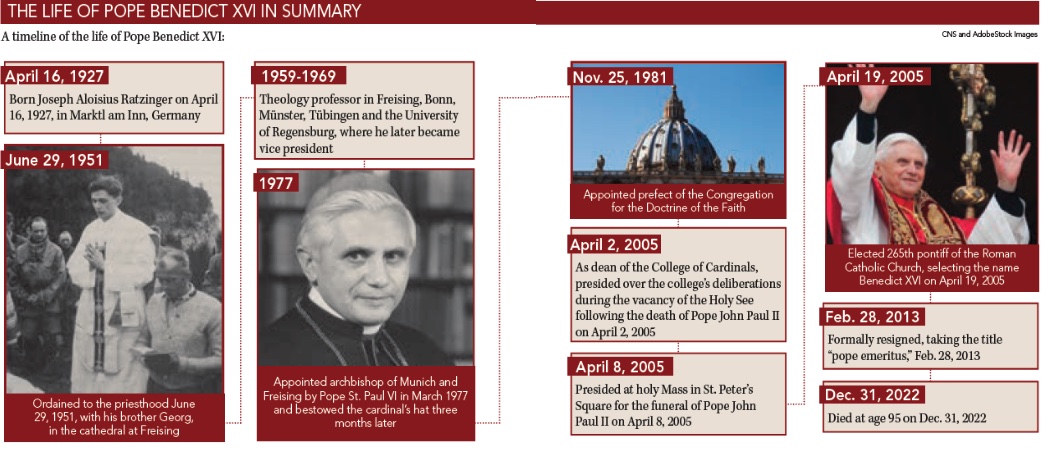
Ministry of the Altar
How often did we see Benedict celebrate Mass in St. Peter’s or around the world (even in a stadium in New York City)? In some ways, it seemed like the altar is where he was most at home, especially during the most solemn of liturgies. Throughout his priesthood, Joseph Ratzinger had a deep appreciation for liturgy and its long history in the Church, and he was a great defender of and advocate for the continued use of Latin in the Mass.
At least one analyst considered the Mass to be central to Pope Benedict’s calling. After Benedict’s death, Father Jeffrey F. Kirby wrote in Crux: “The secret to Pope Benedict’s life as a disciple and priest of Jesus Christ was his deep love for the sacred liturgy. It was the place where he encountered God. It was the place where the professorial introvert could be with God in the midst of the Church. As the liturgy is the summit and source of the entire Christian way of life, so the same could be said about the life of Pope Benedict. The liturgy was his source, just as it was his summit. It was the beginning and the end of everything he did.”
Benedict himself wrote often about liturgy and addressed its importance in the exhortation Sacramentum Caritatis (“Sacrament of Charity”), speaking of the deacon along the way: “The beauty and the harmony of the liturgy find eloquent expression in the order by which everyone is called to participate actively. … [The deacon] “prepares the altar, assists the priest, proclaims the Gospel, preaches the homily from time to time, reads the intentions of the prayer of the faithful, and distributes the Eucharist to the faithful” (No. 53).
As often as he celebrated Mass and worked diligently to ensure its reverence, Pope Benedict was also, in a purely diaconal sense, serving God and his people at the altar — a servant of the sacrifice, and a servant of the art and history behind the liturgy.
I can think of no better way to close than with these words from Pope Benedict himself, one deacon speaking to others, in a spirit of gratitude, fraternity and love.
In 2006, he greeted the deacons of the Diocese of Rome — in effect, his own deacons — to mark the 25th anniversary of the reestablishment of the diaconate as a full and permanent order in the diocese. His message to them then remains his enduring message to us today — and part of his legacy to the worldwide diaconal community.
“Dear deacons, accept with joy and gratitude the love the Lord feels for you and pours out in your lives, and generously give to people what you have received as a free gift. … Many of you work in offices, hospitals and schools: in these contexts you are called to be servants of the Truth. By proclaiming the Gospel, you will be able to convey the Word that can illumine and give meaning to human work, to the suffering of the sick, and you will help the new generations to discover the beauty of the Christian faith. …
“Thus you will be deacons of the liberating Truth, and you will lead the inhabitants of this city to encounter Jesus Christ.”
He concluded: “Dear Roman deacons, by living and witnessing to God’s infinite love, may you always be, in your ministry, at the service of building the Church as communion. In your work you are sustained by the affection and prayer of your families. Your vocation is a special grace for your family life, which in this way is called to be ever more open to the will of the Lord and to the needs of the Church. May the Lord reward the availability with which your wives and children accompany you in your service to the entire ecclesial community.
“May Mary, the humble handmaid of the Lord who gave the Savior to the world, and Deacon Lawrence who loved the Lord to the point of giving up his life for him, always accompany you with their intercession.”
DEACON GREG KANDRA is the creator of “The Deacon’s Bench” blog and the author of “Befriending St. Joseph” (Ave Maria Press, $13.95).

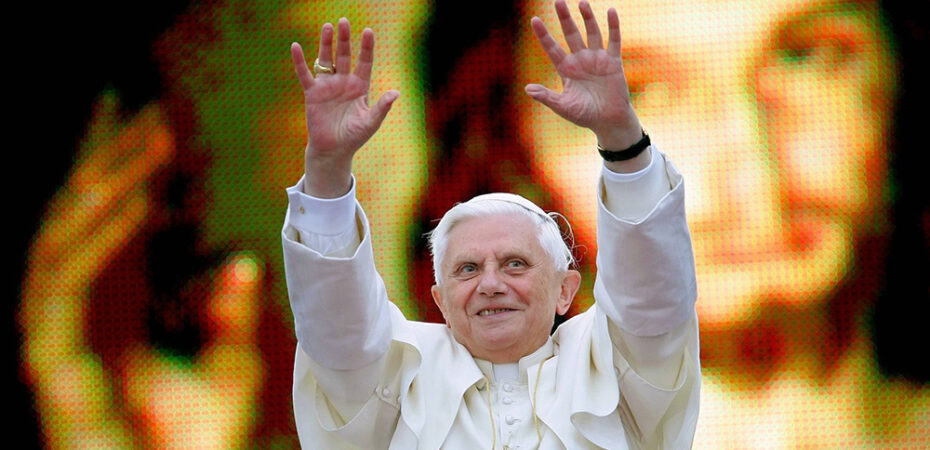
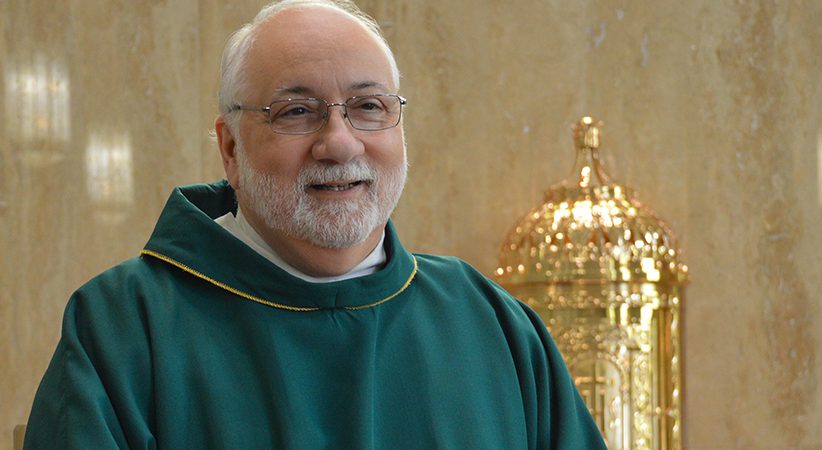
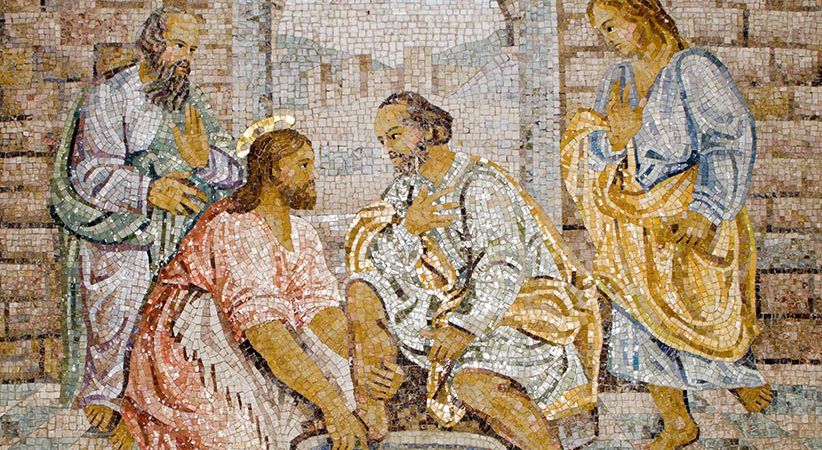
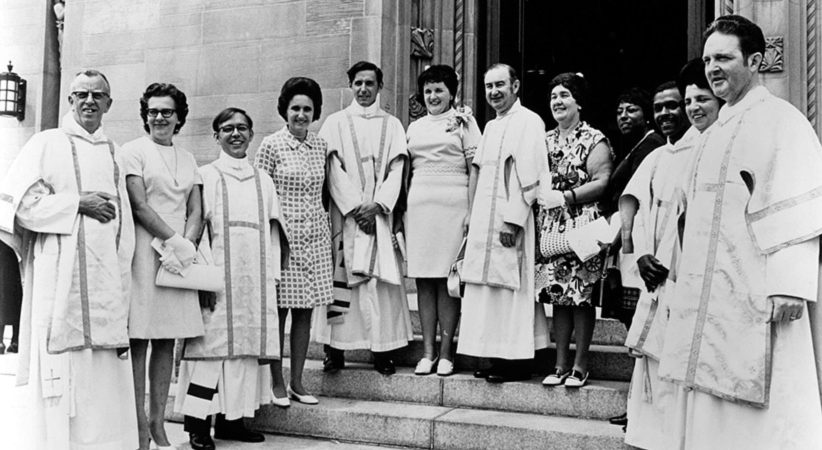
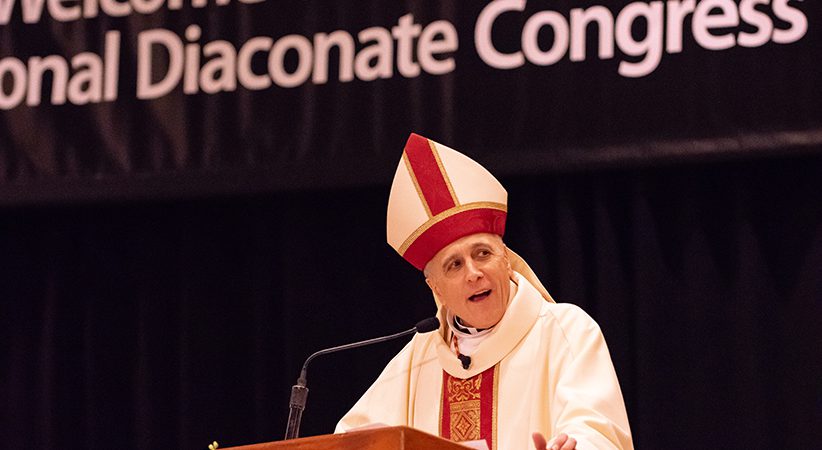
Comments are closed.